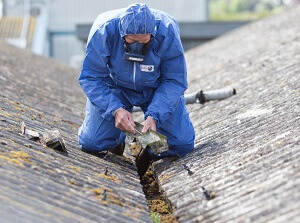ASBESTOS REGULATIONS: The rules on asbestos apply to the landlord, the tenant, or the managing agent of a commercial building.
It means you may have responsibilities for managing asbestos in commercial buildings that you own or rent.
But, there may be an exception if your contract or your lease states otherwise.
What Exactly is Asbestos?
In fact, many years ago people marketed asbestos as a ‘magic mineral’. Nowadays, it has become infamous as a menace to public health in the United Kingdom.
Builders once used asbestos in different types of construction materials before 1980. Thus, many homes and non-domestic properties contain asbestos. You can find it in roof shingles, floor tiles, insulation, and ceiling tiles.
Asbestos is a natural mineral substance that got ‘pulled’ to form a fluffy consistency. This process formed asbestos fibers which are soft and flexible. It is an effective insulator, resistant to heat, chemical corrosion, and electricity.
Qualities such as these, once made asbestos use profitable in the construction industry. But, the United Kingdom banned it in the Asbestos (Prohibitions) (Amendment) Regulations 1999. Since then, further business premises regulations target similar products with high toxicity values.
How to Manage Asbestos in a Building
There are several important steps that you must follow if you discover asbestos in a non-domestic property:
- The first step is determining who is the ‘responsible person for asbestos’. It may not be the property owner if you have a lease or a contract that states something different.
- Find out the exact location of any asbestos. As a rule, due to its toxicity, only an external accredited surveyor can carry out an asbestos survey.
- You must get the material analysed and then keep a proper record of whatever the survey reveals.
- The responsible person will need to organise a health and safety risk assessment on the findings.
- Disclose the information with anyone who may come into contact with the affected areas. Typical examples include builders or maintenance workers.
- You must keep any areas that contain asbestos in good repair or have them sealed. In some cases, it may be necessary to get them removed completely (by a professional).
Note: UKAS is an official United Kingdom Accreditation Service. They can help you source an accredited asbestos surveyor and testing laboratory.
Asbestos Removal Penalties
 There are severe penalties for failing to have a plan to deal with asbestos or putting the plan into action. In some cases, the offenders could face:
There are severe penalties for failing to have a plan to deal with asbestos or putting the plan into action. In some cases, the offenders could face:
- A fine up to £20,000.
- Imprisonment up to twelve (12) months.
Serious breaches of illegal asbestos removal have even stricter penalties. You could get an unlimited fine and imprisonment up to two (2) years.
Note: Asbestos regulations also apply to the owners of a derelict or a vacant building or warehouse. These types of situations also require an asbestos survey.
Extra Information on Asbestos Health and Safety
England, Wales, and Scotland
The Health and Safety Executive (HSE) website has further information on the duty to manage asbestos in non-domestic buildings.
Northern Ireland
Check the Health and Safety Executive Northern Ireland (HSENI) website. It has extra guidance for employees and employers on managing asbestos in Northern Ireland.

